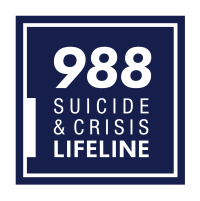
Photo from wikipedia
The risk of suicide in psychiatric hospitals is 50 times higher than in the general population, despite patient safety being a priority for any hospital. However, to date, due to… Click to show full abstract
The risk of suicide in psychiatric hospitals is 50 times higher than in the general population, despite patient safety being a priority for any hospital. However, to date, due to the complexity of assessing suicide risk, there has been no consensus on the suicide prevention measures that should be in place in hospitals. The aim of this work is: To provide an overview of the progress that has been made in the field of inpatient suicide prevention in recent years; discuss the problems that remain; and suggest potential future developments. As new clinical dimensions (notably anhedonia, psychological pain and hopelessness) develop, they should become new therapeutic targets. Team training (like the Gatekeeper Training Program) and the latest advances in suicide risk assessment (such as the Collaborative Assessment and Management of Suicidality) should be implemented in psychiatric wards. Suicide prevention plans (e.g., ASSIP, SAFE-T, etc.) represent easy-to-administer, low-cost interventions. The Mental Health Environment of Care Checklist has been proven effective to reduce suicide risk at hospitals. Furthermore, the types of psychotherapy recommended to reduce suicide risk are cognitive behavioral therapy (CBT) and dialectical behavioral therapy (DBT). There are several pharmacological treatments for suicide risk, such as lithium and clozapine, which have been shown to be effective in the long term, as well as ketamine and esketamine, which are more effective in the short term. Following some encouraging recent results, buprenorphine may also be proposed to patients with a suicide risk. Triple chronotherapy rapidly improves depressive symptoms over 9 weeks. Regarding brain stimulation techniques, rTMS has proven to be effective in alleviating multiple dimensions of suicidality.
Journal Title: Frontiers in Psychiatry
Year Published: 2022
Link to full text (if available)
Share on Social Media: Sign Up to like & get
recommendations!